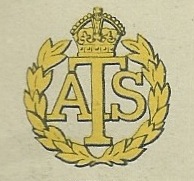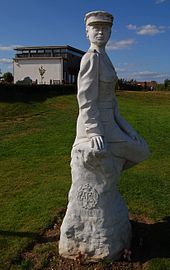
Back Ženské pomocné pozemní sbory Czech Auxiliary Territorial Service German Servicio Territorial Auxiliar Spanish Auxiliary Territorial Service French חיל העזר לנשים HE Տարածքային օժանդակ ծառայություն Armenian Auxiliary Territorial Service Italian 補助地方義勇軍 Japanese 보조 영토 서비스 Korean Женский вспомогательный территориальный корпус Russian
| Auxiliary Territorial Service | |
|---|---|
 Cap Badge of the Auxiliary Territorial Service | |
| Active | 9 September 1938 – 1 February 1949 |
| Allegiance | |
| Branch | |
| Size | 190,000 |
| Commanders | |
| Ceremonial chief | Princess Mary (Honorary Controller-Commandant) |
The Auxiliary Territorial Service (ATS; often pronounced as an acronym) was the women's branch of the British Army during the Second World War. It was formed on 9 September 1938, initially as a women's voluntary service, and existed until 1 February 1949, when it was merged into the Women's Royal Army Corps.
The ATS had its roots in the Women's Auxiliary Army Corps (WAAC), which was formed in 1917 as a voluntary service. During the First World War its members served in a number of jobs including clerks, cooks, telephonists and waitresses. The WAAC was disbanded after four years in 1921.
Prior to the Second World War, the government decided to establish a new Corps for women, and an advisory council, which included members of the Territorial Army (TA), a section of the Women's Transport Service (FANY) and the Women's Legion, was set up. The council decided that the ATS would be attached to the Territorial Army, and the women serving would receive two thirds the pay of male soldiers.

All women in the army joined the ATS except for nurses, who joined Queen Alexandra's Imperial Military Nursing Service (QAIMNS), medical and dental officers, who were commissioned directly into the Army and held army ranks, and those remaining in the FANY, known as Free FANYs.